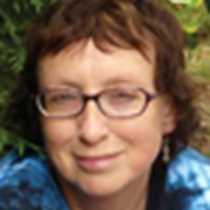Cai Be and Sa Dec
The Jahan has anchored near Cai Be. I disturb Captain Quy, who is eating his noodle breakfast in the wheelhouse. Does he know the current depth of the Mekong River? He removes the cover of an instrument and switches it on. After a few seconds we have a reading: below the Jahan is only 13.4 ft., so total depth from the water level is about 19 feet.
With our guides Tri and Tai we get into covered sampans for a visit of the lively floating market of Cai Be, the waterfront dominated by the Roman Catholic Church. We stop to learn about the various uses of rice, from the rice flour paste to be made into salad roll wrappers, making pop rice with hot sand to making rice wine. Naturally, we try some. We count to three and shout “Yo!” or “Cheers!” in Vietnamese.
Back on the ship I presented an overview of the Mekong River from its source in Tibet to the Mekong delta.
In the afternoon, we drop anchor near Binh Thanh Island, which has a population of three thousand. The excursion in our sampans gives us close-up glimpses of life in the delta: boats, water and fish everywhere. We cruise past water hyacinths, their stems being cut, collected and transported by boat, past fish farmers, who throw feed pellets to hundreds or thousands of pinkish snapper, which cause a brief frenzy. We watch fish being sorted according to size and packed with ice in bags. See fish processing plants that fillet and package the fish for export. We moor at Bhin Thanh Island; a place guide Tri keeps stressing is not touristy. He discovered it a couple of years ago and takes groups there twice a week, but fortunately nothing has changed and no special tourist stalls have sprung up. We meet two locals in a community temple, who briefly introduce themselves and their lives on the island. They volunteer at the temple and organize activities. The Heritage Lines, to which the Jahan belongs, has donated funds to restore the roof.
One of the major activities on the island is reed mat weaving. It is Sunday, but various families including kids are involved in weaving and finishing of the sides. These are the cool mats good for sleeping in this tropical climate. Much better than our mattresses, which will not hold up well with high humidity levels.
We return to our ship and are, as usual, greeted by the staff with cold towels and tea. Before dinner we have a Mekong Delta presentation by our guides and hear again their personal stories and get their perspectives. Vietnam is a one-party state, but people don’t seem to be keen on having more than one party according to Tri. “One party; one problem. Who needs more problems?” The audience thinks this a hilarious remark.
This was another full day with amazing experiences, stories and sights.




